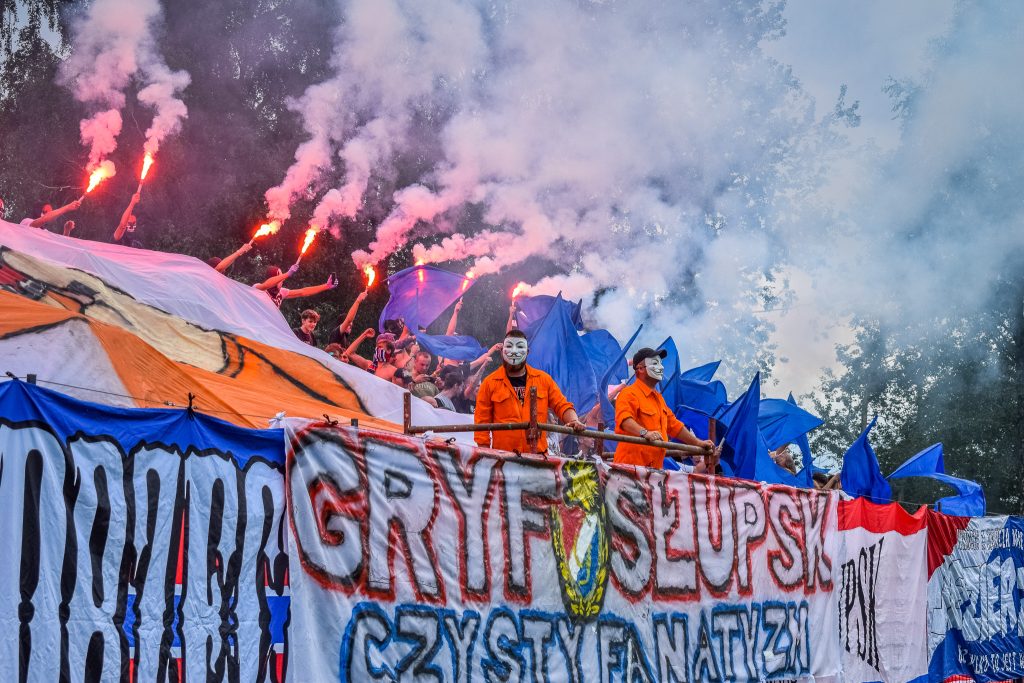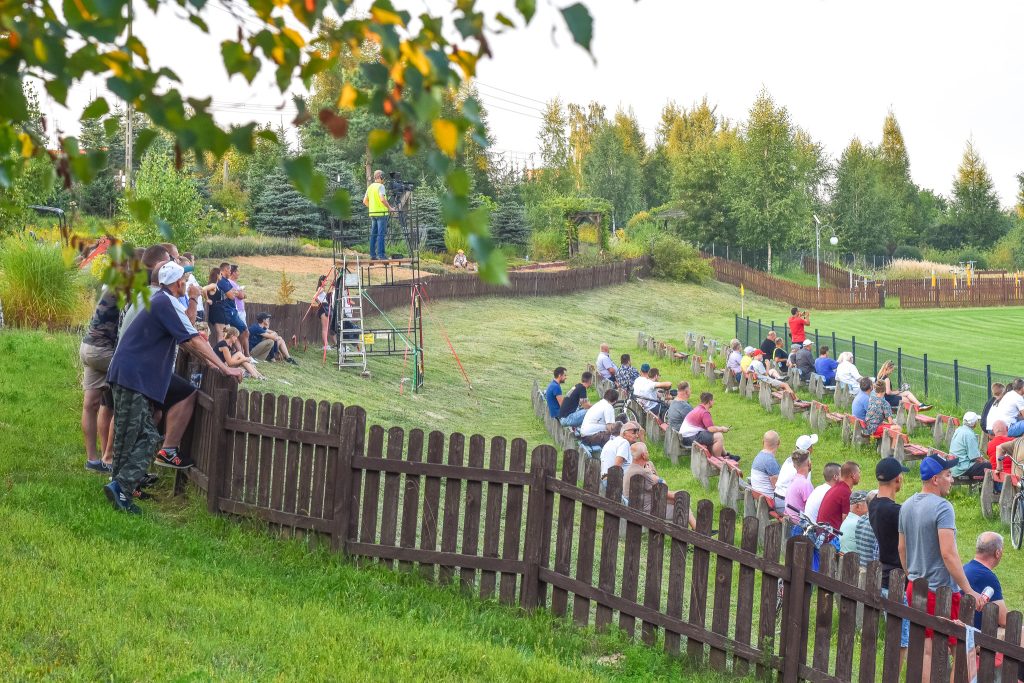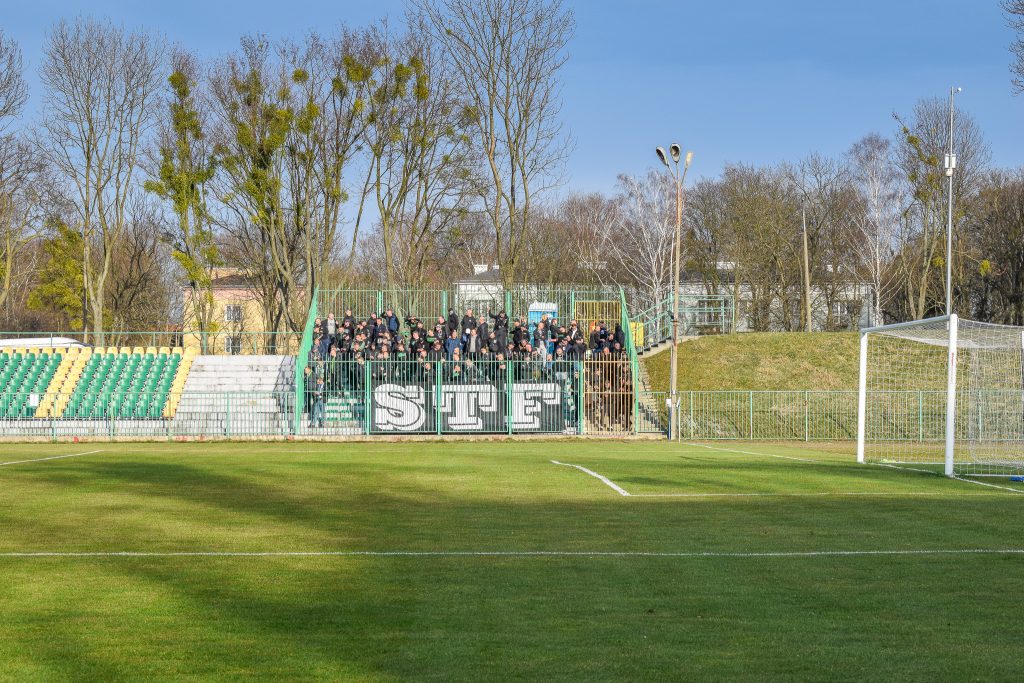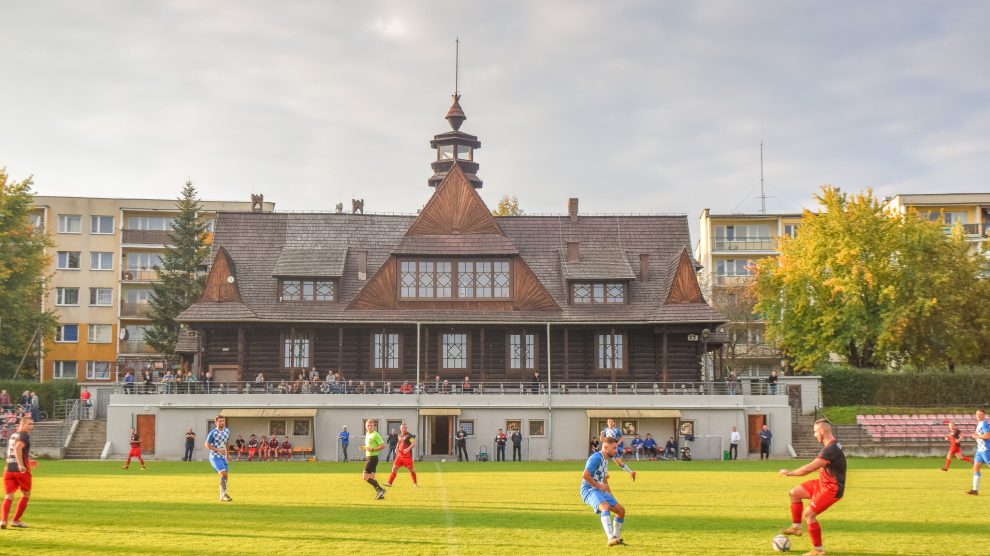English writer and photographer Alex Webber, author of the forthcoming The Heart of Poland: An Odyssey Through a Country’s Football Culture, believes that the iconoclasm present in Polish football reflects a trend visible across wider society.
Alex Webber would probably be horrified to be labelled an influencer, but when it comes to lower league Polish football, he has become—unwillingly, unknowingly or otherwise—just that.
For several years, Webber has been leaving his home in Warsaw every weekend to travel to football grounds across Poland—often in its furthest flung regions—to document the match day experience. His tally of Polish stadiums now tops 160.
“I want to capture what makes these places special,” he says. “The stadiums, the fan culture, the impact football can have on small towns.”
- Travelling through Central and Eastern Europe and Central Asia: Five essential reads
- A history of Poland in five novels
- Steaua Bucharest’s 1986 European Cup miracle would be impossible now, but they can at least dream
Webber has lived in Poland for nearly a quarter of a century, having originally moved to Warsaw in 2000 to take up a job as the editor of city guide Warsaw In Your Pocket. He quickly became a fixture in the Polish capital, his powerful pen and acerbic wit the bane of many a restaurant and bar owner. He once famously referred to an Irish pub (now long defunct) as having “about as much in common with the Emerald Isle as Ghana”.
Webber says that he ditched travel writing out of sheer apathy. “There just isn’t really anything left for me to say about Warsaw’s restaurants,” he says.
The road less travelled
Throughout his long stint in Poland, Bristolian Webber (City, not Rovers) has remained a keen football fan, attending as many games as his busy (and by his own admission chaotic) schedule allowed.
These days he devotes even more time to football—he will usually attend three matches each week. A typical weekend will usually include a game from one of Poland’s top two divisions featuring the country’s biggest teams, as well as two other matches from lower down the pyramid.
“My focus has always been on the lower leagues, the forgotten leagues, the dungeon leagues, the little teams, the rural sides. The road less travelled,” Webber says. “It was the same when I was a travel writer—the places that go under the radar often turn out to be the most interesting.”

Fans of fourth division Gryf Słupsk
Besides writing features for football magazines from the across the globe, Webber chronicles his travels on his popular website, as well as an increasingly successful Instagram account, PolskiFootballCulture.
An accomplished photographer as well as wordsmith, Webber’s latest project is a book, The Heart of Poland: An Odyssey Through a Country’s Football Culture, set to be published later this year by Pitch Publishing, the UK’s most prolific independent sports publisher.
Though it features stunning photos from across the country, the narrative that accompanies them makes it clear where Webber places that heart. “Silesia,” he says, without hesitation.
Silesia is often recognised as the industrial powerhouse of Poland, a region where factory chimneys tower over the landscape like floodlights at a football ground.
However, to pigeonhole Silesia merely as an industrial hub is, Webber argues, to overlook one of its most passionate and vibrant facets—its central role in the heart and soul of Polish football. “And not just the big clubs such as Ruch Chorzów, GKS Katowice or Górnik Zabrze. It’s the smaller sides in the region—such as Górnik Wojkowice—that that really consist of the heart, the pumping blood.

Górnik Wojkowice
“You can attend a game with 300 fans and a couple of dogs and yet the atmosphere will be electric. That’s where you’ll find the lifeblood of the game: in these grimy cities and towns and stadiums that are falling apart, that have been forgotten.”
For decades, until the redevelopment of Warsaw’s Narodowy Stadium for the UEFA 2012 European Championships, Silesia’s Śląski Stadium in Chorzow hosted Poland’s national team matches. It was perhaps the bleakest of all the socialist superbowls that littered Central and Eastern Europe, but some of Poland’s most fervent fan bases made it a daunting place for visiting teams—and supporters.
Death by renovation
Like so many of Poland’s football grounds however, Śląski Stadium has also been renovated—stripped, in the name of modernisation, of much of its charm and menace. Webber points out, however, that a few old details have been “splendidly” preserved, such as a mosaic outside the old stand and a couple of the tunnels that used to lead onto the pitch.
“In Chorzow, you can at least still sense the sporting history,” he says. Other places in the country have not been so fortunate. It’s an unwelcome trend that haunts modern football across the globe.
“So quickly are these wonderful old grounds disappearing that if I didn’t write my book now, then the opportunity would have passed. The game that I love is disappearing, and I’ve no doubt that in a few years’ time, I would have given up on it entirely,” Webber confesses. “I say that with sadness, but also with a degree of certainty.”
Some of his favourite grounds, such as GKS Katowice and Odra Opole, will soon be filed under paradise lost; both clubs are moving to new stadiums at the end of this season. Cisowianka Drzewce meanwhile, “the epitome of rural football,” as Webber puts it, can no longer play in their own stadium due to safety regulations.

Cisowianka Drzewce: ‘The epitome of rural football‘
Webber believes that Euro 2012 was a watershed moment for Polish football: “That’s when the police really started getting their game together. That’s when the stadiums started to close. That’s when the stadium improvements first started.”
He admits, however, that the changes have been efficient at reducing the amount of hooliganism—once a major problem in Polish football. “That said, it still goes on. There are still some high-profile incidents,” Webber says, adding that he sometimes captures them on his camera.
“I sometimes refer to myself as a storm chaser in that I do look for the feistier games.”
One of the methods that Polish football has long employed to combat hooliganism is the use of so-called ‘away cages’—pens in which supporters of opposition teams would be forced to stand.
“They look like a cross between medieval public jails and something in which you’d keep the elephant man in Victorian London,” says Webber. “They’re brutal but I love them. Unfortunately, they are shrinking in number as stadium improvements are carried out across the board—from the top teams in the first division to the lowliest side in the smallest village.”

The away supporters cage at Chełmianka Chełm
Iconolasm
Webber quickly adds, however, that he uses the word ‘improvements’ ironically, referring to the “anonymous, identical plastic box stadiums that look as though they have all been ordered from the same catalogue.”
“It’s all part of the homogenisation of football, its gentrification. To me, a stadium should be unique, a timeless link between a village, town or city and the team that represents it,” he argues.
Pointing out that, “I’m not a dinosaur, I do believe in progress,” Webber suggests that progress should, however, never come at the cost of heritage and tradition.
“Across the world, hundreds of millions of people identify themselves through the football club they support. It’s as much part of their identity and self-expression as their clothes or haircut. More, even. But a football club is not just part of a person’s identity, it funnels out to become part of a town’s identity. So why are clubs, towns, fans, settling for stadiums that look like carbon copies of each other?
“These stadiums are where history is written, where stories are told, where legends and heroes are made. I am of the belief that a stadium should channel this. One shoe does not fit all, a stadium needs to be individual. My message to cities and to architects is to come up with something different.”
Webber points at Japan’s J-League or the US MLS as positive examples. “There are so many different styles of stadiums in these leagues, you wonder how countries that lack the overt football tradition of Poland manage to do so much better when it comes to stadium design.”
Webber believes that the iconoclasm present in Polish football reflects a trend visible across wider society.
“Poles love history, but there’s very little love for anything built during the period of communist rule, even the modernist gems of the 1960s,” he says. “If something went up before World War II, the attitude is, ‘let’s protect it, let’s preserve it’. For anything post war, there’s not quite so much enthusiasm.
“I get the impression that they don’t smell the story, they just see the dirt that’s accumulated. But the story matters. History matters. Heritage matters. Character matters. Not just in football, but life in general. But we live in a world where we’ve lost sight of this.
“And when it comes to sport, tradition really matters, especially when it comes to football. You’re brought up on tales from the past.”
Fortunately, Webber’s timely book promises to immortalise them.
All photos by and © Alex Webber.
Unlike many news and information platforms, Emerging Europe is free to read, and always will be. There is no paywall here. We are independent, not affiliated with nor representing any political party or business organisation. We want the very best for emerging Europe, nothing more, nothing less. Your support will help us continue to spread the word about this amazing region.
You can contribute here. Thank you.







Add Comment